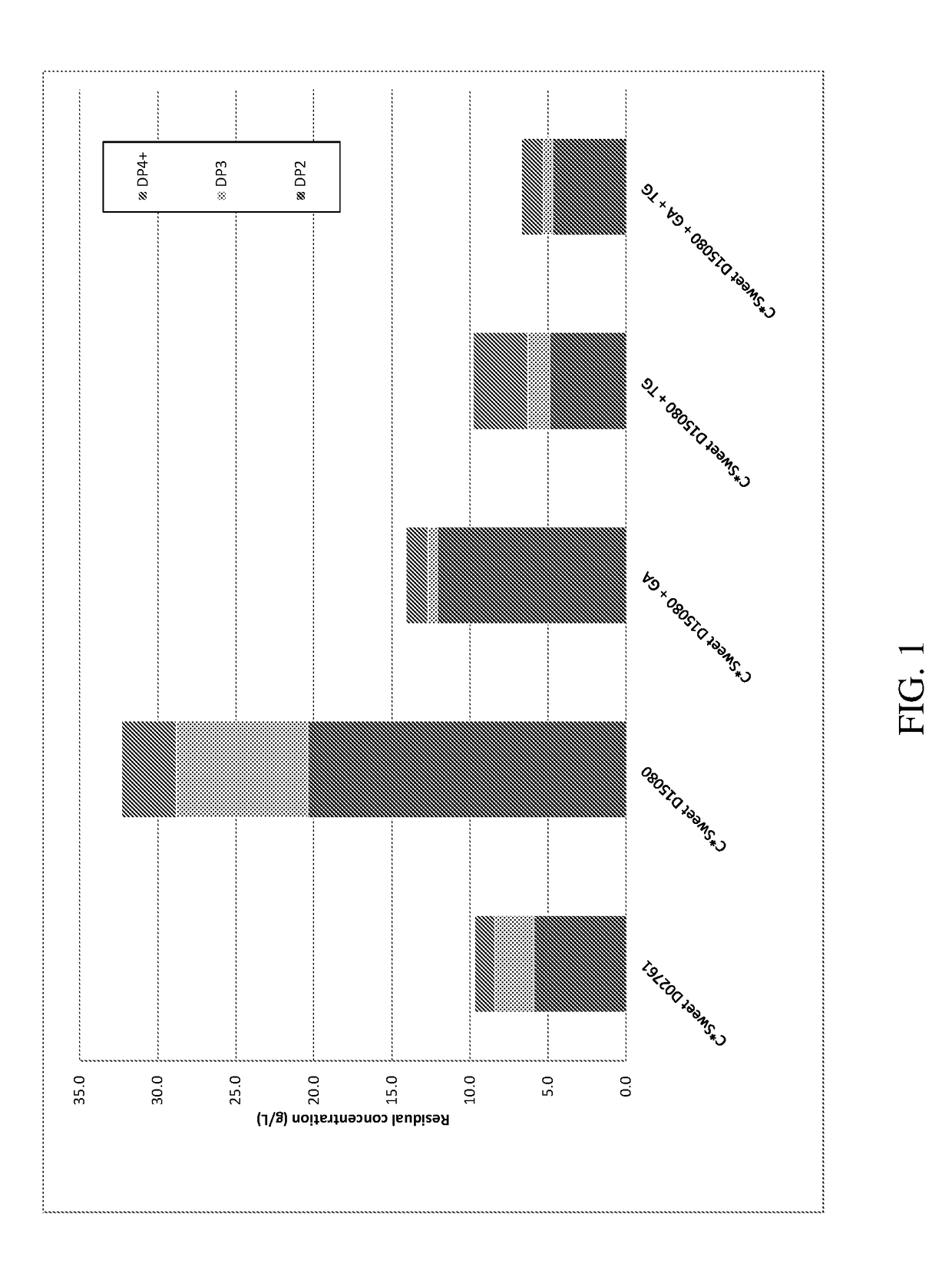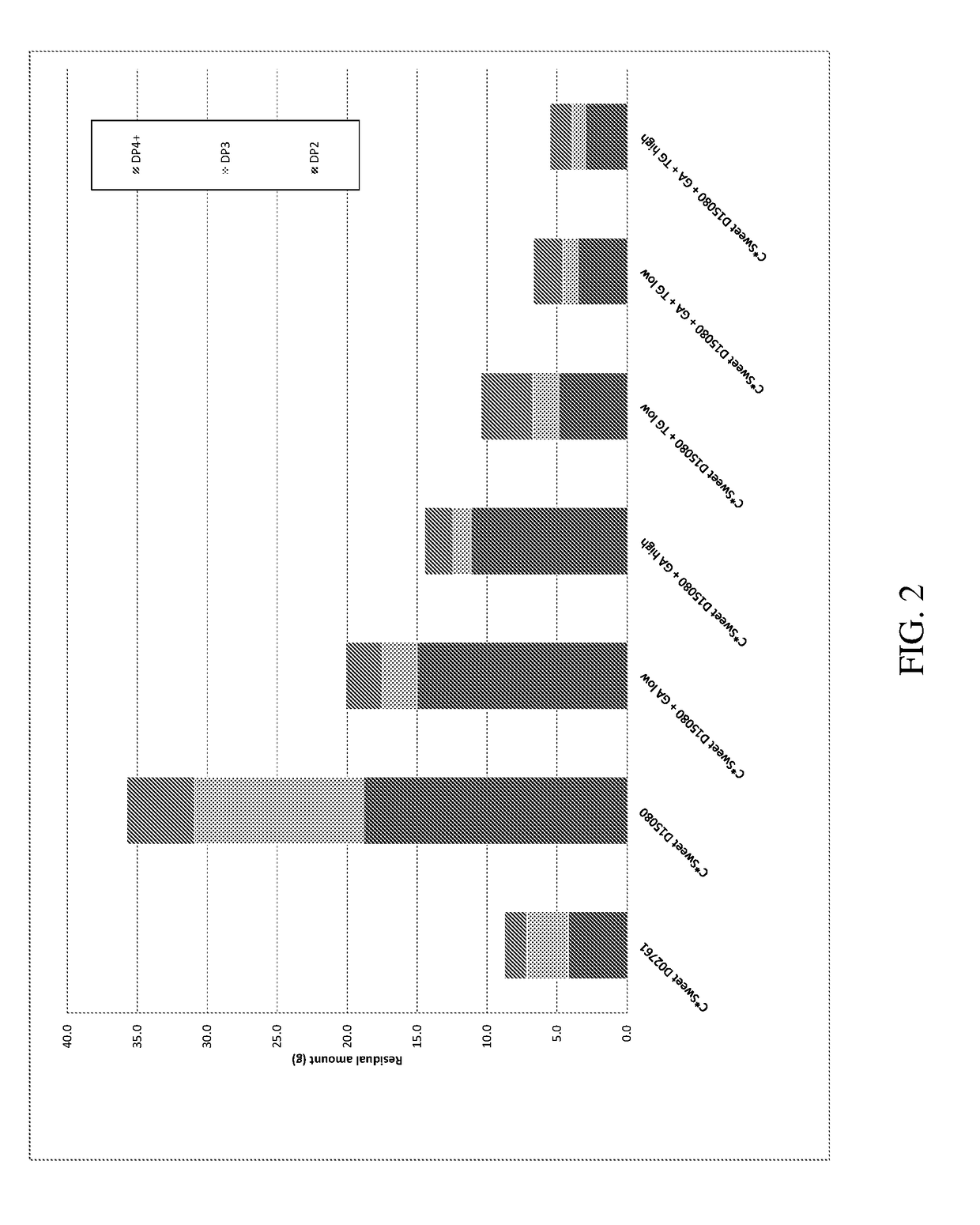Method for fermenting sugars
- Summary
- Abstract
- Description
- Claims
- Application Information
AI Technical Summary
Benefits of technology
Problems solved by technology
Method used
Image
Examples
example 1
Saccharomyces cerevisiae Fermentation
[0066]Shake flasks were used at 32° C. with a reference working volume of 0.2 L.
Batch Process
[0067]Carbon source (C*Sweet D02761 or C*Sweet D15080 as described above): circa 200 g carbohydrate / kg, all added to initial fermentation broth[0068]Nitrogen source: yeast extract and urea[0069]Yeast inoculum[0070]pH at start: 4.5 (not controlled during batch process)[0071]Addition of enzyme(s) after 24 and / or 48 h (when glucose reaches less than 30 g / L)[0072]Fermentation continued until 72 h (complete depletion of fermentable sugars)
[0073]To assess the effect of the enzymes, fermentations were run without enzyme, with only GA or TG, and with both GA and TG, as follows:
NoGA at 24 h +EnzymeTG at 24 hGA at 24 hTG at 48 hC*Sweet D02761✓C*Sweet D15080✓✓✓✓
[0074]GA was used at 100 μL per kg broth or 0.56 g per kg carbohydrate, and TG was used at 150 μL per kg broth or 0.85 g per kg carbohydrate.
Measurements
[0075]Sugar composition was measured at completion of t...
example 2
E. coli Fermentation
[0081]Fermenters were set up at 37° C. with a reference working volume of 1.3 L.
Fed-Batch Process
[0082]Phase 1:[0083]Carbon source (C*Sweet D02761 or C*Sweet D15080 as described above, diluted in water)[0084]Nitrogen source: ammonium sulfate and ammonia (also for pH control at 6.0)[0085]Salts, minerals[0086]Bacterial inoculum[0087]Phase 2:[0088]Linear sterile addition of extra carbon source (high glucose starch hydrolysate or dextrose greens as described above, diluted in water) during 48 h, starting after depletion of initial carbon source from batch[0089]Single shot addition of enzyme, added simultaneously with the start of carbon source addition for Phase 2[0090]Continued until complete depletion of fermentable sugars (no more metabolic activity)
CarbonVolumeSourceCarbohydratesCarbohydratesGlucose(L)(g)(g)(g / L)(g / L)Phase 10.86343.931.636.630.2a or35.3bPhase 20.437317.7228.7Total1.300361.5260.3200.2165a or193bafor C*Sweet D15080 andbfor C*Sweet D02761
[0091]To as...
PUM
 Login to View More
Login to View More Abstract
Description
Claims
Application Information
 Login to View More
Login to View More - R&D
- Intellectual Property
- Life Sciences
- Materials
- Tech Scout
- Unparalleled Data Quality
- Higher Quality Content
- 60% Fewer Hallucinations
Browse by: Latest US Patents, China's latest patents, Technical Efficacy Thesaurus, Application Domain, Technology Topic, Popular Technical Reports.
© 2025 PatSnap. All rights reserved.Legal|Privacy policy|Modern Slavery Act Transparency Statement|Sitemap|About US| Contact US: help@patsnap.com


